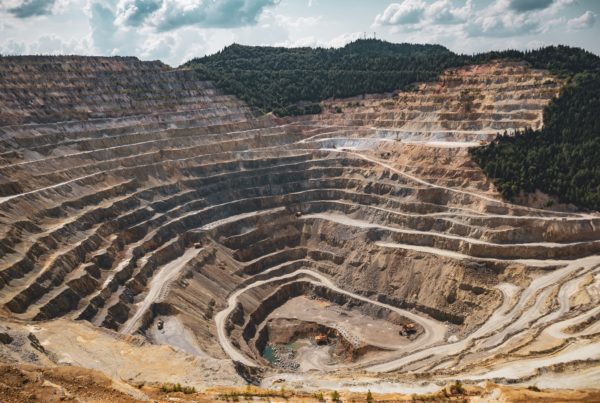
A team of researchers from the Polytechnic University of Valencia (UPV) and the Higher Council for Scientific Research (CSIC) has discovered a new method that allows transforming electricity into hydrogen or chemical products, exclusively applying power microwaves -without cables and without any contact with electrodes.
It is a revolution in the field of energy research and a key advance for the industrial decarbonization process, as well as for the future of sectors such as the automotive or chemical industry, among many others. He is echoed in the latest issue of the journal Nature Energy where the discovery is described.
The technology developed and patented by the UPV and the CSIC is based on the phenomenon of microwave reduction of solid materials. Thanks to it, it is possible to carry out electrochemical processes directly in volume and without the need for electrodes, which substantially simplifies and lowers its practical application by having much more freedom in the design of the device architecture and in the choice of operating conditions. mainly the temperature.
“It is a technology with enormous practical potential, especially for use in energy storage and production of synthetic fuels and green chemicals. This aspect has now a transcendental relevance, since both transport and industry are involved in a transition to decarbonise, that is, they must meet very demanding objectives between 2030 and 2040 to reduce the consumption of energy and materials from fossil sources , mainly natural gas and oil ”, highlights José Manuel Serra, CSIC research professor at the Institute of Chemical Technology.
Green hydrogen for industrial use and transportation
The main application of this “revolutionary” technology that researchers from the Institute of Information and Communication Technologies (ITACA) of the UPV and the Institute of Chemical Technology (ITQ) have studied is the joint production of the UPV and the CSIC of green hydrogen (produced without emitting greenhouse gases) from water, for industrial use and transport.
According to the ITQ and ITACA team, it is a technology with great potential for the automotive sector, specifically for cars powered by fuel cells and hybrids or large vehicles such as trains or ships. But also for the chemical industry, metallurgy, the ceramic sector or the production of fertilizers, among many other sectors. “This method will make possible the transformation of renewable electricity, typically of solar or wind origin, into value-added products and fuels
green. Its applications are innumerable and we hope that new uses will emerge in energy storage, development of new materials and chemical production ”, highlights José Manuel Catalá, researcher at the ITACA Institute of the UPV.
In the article published in Nature Energy , the researchers also offer a technical and economic study that shows that with this technology high energy efficiencies can be achieved and that the costs of the facilities to develop the hydrogen production process are very competitive with respect to those of conventional technologies.
Ultra-fast battery charging … and space exploration
The UPV and CSIC team are studying other future applications of this technology and are now focusing their efforts on its use for ultra-fast battery recharging. “Our technology could make possible the almost instantaneous reduction of the entire volume of the electrode (metal anode) in which the energy is stored. In other words, we would go from a layer-by-layer progressive charging process, which can take hours, to a simultaneous process in the entire volume of the electrolyte, which would allow charging a battery in a few seconds ”, points out José Manuel Catalá.
Another application that would be the direct generation of oxygen with microwaves, which opens a wide field of new applications. “A specific use would be the direct production of oxygen with extraterrestrial rocks, which could play an important role in the future exploration and colonization of the Moon, Mars or other rocky bodies in the solar system,” concludes José Manuel Serra.
A little history of the discovery
The team of researchers observed that when ionic materials were being processed with microwaves, the materials showed unusual changes in their properties, especially in their electronic conductivity, changes that did not happen when heated in a conventional way. “Our curiosity to understand these abrupt changes in their electrical properties made us continue to dig deeper, design new experiments, new microwave reactors and apply other analytical techniques”, explains José Manuel Catalá.
The team from the ITACA and ITQ institutes found that microwaves interact with these materials, accelerating electrons and leading to the release of oxygen molecules from their structure (which is also called reduction). This change manifested itself precisely with abrupt changes in conductivity at relatively low temperatures (~ 300ºC). “This state of semi equilibrium is maintained while microwaves are applied, but it tends to be reversed through reoxygenation (reoxidation) when the microwaves are stopped. We immediately realized the enormous practical potential that this discovery had, especially in a situation such as the current one of progressive decarbonisation, necessary to achieve the objective of making the European Union climate neutral by 2050,
Bibliographic reference
Serra, JM, Borrás-Morell, JF, García-Baños, B. et al. Hydrogen production via microwave-induced water splitting at low temperature . Nat Energy (2020).
Source: UPV
Read the most up to date Fuel Cell and Hydrogen Industry news at FuelCellsWorks




